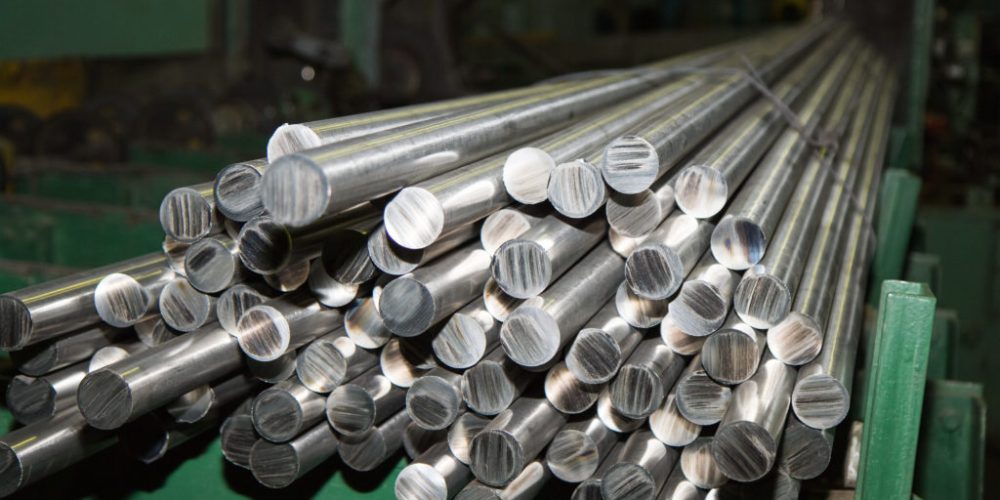Blog Details

Properties and Applications of Titanium Alloys
In 1948, the United States DuPont Company used the magnesium method to produce tons of titanium sponge – this marks the beginning of the industrial production of titanium sponge titanium, and titanium alloy is widely used in various fields because of its high specific strength, good corrosion resistance and high heat resistance. Titanium alloys have been used in aviation for more than half a century. In the 3C field, many mobile phones have been imported into the material, and more and more manufacturers are expected to use titanium alloy. So why is titanium alloy so popular?
Properties of Titanium Alloys
High strength: 1.3 times of aluminum alloy, 1.6 times magnesium alloy, and 3.5 times of stainless steel, the champion of metal materials.
High thermal strength: the use temperature is several hundred degrees higher than aluminum alloy, and it can work for a long time at a temperature of 450 ~ 500 C.
Good corrosion resistance: acid resistance, alkali resistance, atmospheric corrosion resistance, pitting corrosion, and stress corrosion resistance are particularly strong.
Good low-temperature performance: Titanium alloy TA7 with deficient gap elements can maintain a certain plasticity at -253 ° C.
High chemical activity: high chemical activity at high temperatures, easily reacts with gas impurities such as hydrogen and oxygen in the air to generate a hardened layer.
The thermal conductivity is small, the elastic modulus is small: the thermal conductivity is about 1/4 of nickel, 1/5 of iron, 1/14 of aluminum, and the thermal conductivity of various titanium alloys is about 50% lower than the thermal conductivity of titanium. The elastic modulus of titanium alloy is about 1/2 that of steel.
Classification and use of titanium alloys
Titanium alloys can be divided into heat-resistant alloys, high-strength alloys, corrosion-resistant alloys (titanium-molybdenum, titanium-palladium alloys, etc.), low-temperature alloys, and special functional alloys (titanium-iron hydrogen storage materials, titanium-nickel memory alloys). Although the history of titanium and its alloys is not long, it has won several honorable titles because of its extraordinary properties. The first won title is “space metal”, it is lightweight, has a specific strength, and high-temperature resistance, especially suitable for the manufacture of aircraft and various spacecraft. About three-quarters of the world’s production of titanium and titanium alloys are used in the aerospace industry. Many parts originally made of aluminum alloy have been converted to titanium alloy.
3. Analysis of machining characteristics of titanium alloy
First of all, the thermal conductivity of titanium alloy is low, only 1/4 of steel, 1/13 of aluminum, and 1/25 of copper. Due to the slow heat dissipation of the cutting zone, which is not conducive to the heat balance, in the cutting process, the heat dissipation and cooling effect is very poor, easy to form high temperatures in the cutting zone, and the deformation and rebound of the parts after processing is large, increasing by cutting tool torque, fast cutting edge wear and reduced durability.
Secondly, the thermal conductivity of titanium alloy is low, so the cutting heat accumulation in the small area near the cutting tool is not easy to distribute, the front tool surface friction is increased, it is not easy to remove chips, the cutting heat is not easy to distribute, and the tool wear is accelerated. Finally, the chemical activity of titanium alloy is high, and it is easy to react with the tool material at high temperatures, forming dissolution and diffusion, resulting in the phenomenon of sticking, burning, and breaking the knife.
Machining center processing titanium alloy characteristics
The machining center can process multiple parts simultaneously to improve production efficiency. Improve the machining accuracy of parts, product consistency is good. The machining center has the tool compensation function, which can obtain the machining accuracy of the machine tool itself. It has a wide range of adaptability and greater flexibility, such as the arc processing of the part, chamfering, and transition rounding, which can achieve multiple functions of one machine. Machining centers can be milling, drilling, boring, tapping, and a series of processing. Accurate costing can be performed to control the production schedule. Do not need special fixtures, save a lot of cost funds, and shorten the production cycle. Greatly reduce the labor intensity of workers. Multi-axis machining can be done with UG and other machining software.
Prototek has been offering professional custom CNC machining parts for over 13 years. If you have any needs about metal manufacturing services, contact us via email: Lynnyao@prototekparts.com or phone: +86-0792-86372550
Tags:
- Titanium
























































